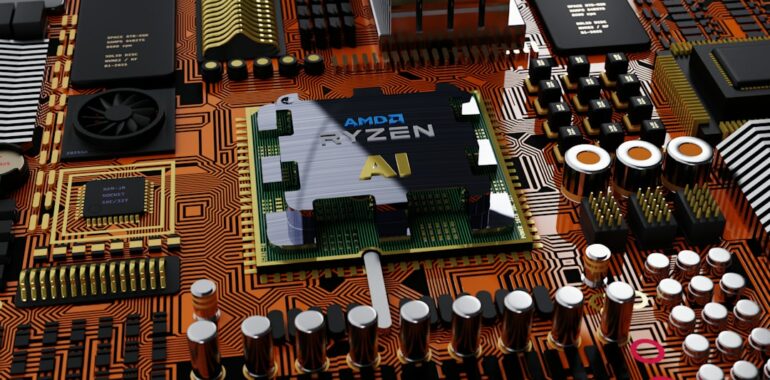GPU Clusters Explained: Architecture, Benefits, and Use Cases

SEO Meta Description: Discover the architecture, benefits, and real-world applications of GPU clusters in accelerating AI infrastructure and computing with parallel computing using GPUs.
Introduction
In the rapidly evolving landscape of artificial intelligence and high-performance computing, parallel computing with GPUs has emerged as a cornerstone technology. GPU clusters, or graphics processing unit clusters, harness the collective power of multiple GPUs to tackle complex computational tasks with unprecedented speed and efficiency. This blog delves into the architecture of GPU clusters, explores their myriad benefits, and highlights their practical applications across various industries.
What are GPU Clusters?
GPU clusters are parallel computing systems that integrate multiple GPUs connected through high-speed networks to work in unison. Unlike traditional CPU-based clusters, GPU clusters are optimized for parallel processing, making them exceptionally well-suited for workloads that can be divided into smaller, simultaneous tasks. This parallelism is fundamental in accelerating tasks such as machine learning model training, scientific simulations, and data analysis.
Architecture of GPU Clusters
Understanding the architecture of GPU clusters is essential to grasp how they achieve high performance in parallel computing scenarios.
Graphics Processing Units (GPUs)
At the heart of a GPU cluster are the GPUs themselves. These specialized processors are designed to handle large-scale parallel operations efficiently. Each GPU consists of thousands of smaller cores that can execute multiple tasks simultaneously, providing a significant performance boost for parallelizable workloads.
Node Architecture
A GPU cluster is organized into nodes, where each node comprises one or more GPUs, a central processing unit (CPU), memory, storage, and networking components. This node-based structure allows for scalable performance, as additional nodes can be integrated to meet increasing computational demands.
Central Processing Unit (CPU)
While GPUs handle the bulk of parallel computations, the CPU acts as the orchestrator within each node. It manages the allocation of tasks, coordinates data flow between GPUs, and handles operations that are not suitable for parallel processing. This symbiotic relationship between CPUs and GPUs ensures seamless operation and efficient workload distribution.
Memory
Memory is a critical component of GPU clusters. Each GPU is equipped with high-speed video RAM (VRAM) to store data during processing. Additionally, each node contains system RAM shared among the CPU and GPUs, facilitating rapid data transfer and minimizing latency during computations.
Storage
Effective storage solutions are vital for GPU clusters to handle large datasets and application files. High-performance storage, such as solid-state drives (SSDs), is commonly used to ensure quick data retrieval and support the continuous flow of data to GPUs for processing.
Interconnects
The interconnects between nodes determine the overall performance of a GPU cluster. Technologies like InfiniBand and NVIDIA NVLink provide high-speed communication channels that minimize data transfer latency and maximize bandwidth, ensuring that GPUs can collaborate effectively on complex tasks.
Benefits of GPU Clusters
GPU clusters offer numerous advantages that make them indispensable in modern computing environments:
- Enhanced Performance: The parallel architecture of GPU clusters allows for the simultaneous execution of multiple tasks, drastically reducing computation times for large-scale projects.
- Scalability: GPU clusters can be easily scaled by adding more nodes, providing flexibility to accommodate growing computational needs without significant infrastructure overhauls.
- Cost-Efficiency: By optimizing the use of GPU resources, organizations can achieve higher performance levels without proportional increases in costs, especially when leveraging cloud-based GPU clusters.
- Versatility: GPU clusters are versatile and can be applied across various domains, from scientific research to financial modeling, making them a valuable asset for diverse applications.
Use Cases of GPU Clusters
The robustness and speed of GPU clusters make them ideal for a wide range of applications:
Scientific Research
In scientific fields such as physics, chemistry, and biology, GPU clusters enable complex simulations and data analyses. Tasks like molecular dynamics simulations, weather forecasting, and particle physics experiments benefit significantly from the parallel processing capabilities of GPUs.
Machine Learning and Deep Learning
Training deep neural networks is a computationally intensive process that thrives on parallel computing with GPUs. GPU clusters accelerate model training, reduce time to deployment, and enhance the efficiency of AI-driven applications, making them essential tools for machine learning practitioners.
Oil and Gas Exploration
The oil and gas industry utilizes GPU clusters for seismic data processing, reservoir simulations, and geological modeling. The ability to rapidly process vast amounts of geological data allows for more accurate exploration and efficient resource management.
Financial Modeling
In finance, GPU clusters are employed for complex mathematical modeling, risk analysis, and algorithmic trading. The speed and parallel processing power of GPUs enable financial institutions to perform high-frequency trading and real-time risk assessments with greater precision.
Computer-Aided Design (CAD) and Rendering
Industries like architecture, engineering, and film production rely on GPU clusters for rendering high-quality images and videos. The parallel processing capabilities significantly reduce rendering times, facilitating quicker project iterations and enhancing creative workflows.
Healthcare and Genomics
GPU clusters play a pivotal role in healthcare by accelerating tasks such as medical imaging analysis, drug discovery, and genomic research. The ability to process large datasets swiftly contributes to advancements in personalized medicine and genomic studies, improving patient outcomes.
Challenges and Future Trends
Despite their advantages, GPU clusters face several challenges that need to be addressed:
- Power Consumption: GPU clusters consume significant power, necessitating efficient power management solutions to reduce operational costs and environmental impact.
- Heat Dissipation: High-performance GPUs generate substantial heat, requiring advanced cooling systems to maintain optimal operating temperatures and ensure system reliability.
- Programming Complexity: Developing parallel algorithms and optimizing code for GPU architectures can be complex, requiring specialized expertise and tools.
Future Trends
The future of GPU clusters is poised for advancements that will enhance their performance and usability:
- Hardware Innovations: Continuous improvements in GPU technology, including more powerful and energy-efficient models, will drive better performance and lower costs.
- Interconnect Enhancements: Advancements in interconnect technologies will further reduce data transfer latency and increase bandwidth, enhancing the collaborative capabilities of GPU clusters.
- Software Optimization: Enhanced software frameworks and tools will simplify the development and deployment of parallel applications, reducing the barrier to entry for leveraging GPU clusters.
NetMind AI Solutions: Empowering Efficient Parallel Computing with GPUs
NetMind offers a comprehensive platform tailored to accelerate AI project development through flexible integration options. Their scalable GPU clusters are designed to optimize computation resources, providing robust inference capabilities essential for parallel computing with GPUs. With services like NetMind ParsePro for efficient data processing and the Model Context Protocol (MCP) for seamless AI model communication, NetMind empowers organizations to harness the full potential of their GPU clusters without extensive technical overhead.
Moreover, NetMind’s Elevate Program supports startups with monthly credits up to $100,000, enabling innovative companies to leverage high-performance GPU clusters and drive forward their AI initiatives. By addressing common challenges such as high costs and complex infrastructure, NetMind facilitates accessible and scalable AI solutions for businesses of all sizes across North America, Europe, and Asia-Pacific.
Conclusion
GPU clusters represent the future of high-performance parallel computing, driving advancements across diverse industries by leveraging the unparalleled processing power of GPUs. From accelerating AI model training to enabling groundbreaking scientific research, the architecture and capabilities of GPU clusters make them indispensable in today’s data-driven world. As technology continues to evolve, GPU clusters will remain at the forefront of enabling efficient and scalable computational solutions.
Discover how NetMind’s customizable AI integration and scalable GPU clusters can transform your enterprise’s AI infrastructure. Learn more at NetMind.ai




